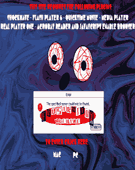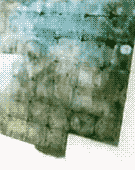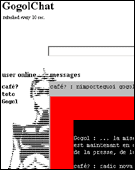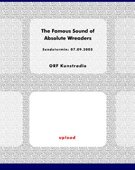:: A Brief history of ideas and their documentation ::
Prior to the invention of the printing press, ideas were embodied in stories passed from generation to generation because of the lack or inadequacy of permanent formats. Due to this they could and often did change, distort or evolve over time. With the introduction of printing it was possible to mass produce the representation of ideas (often mis-interpreted as the mass production of ideas). This created a complete shift in documentation. Now if there were enough documented copies of an idea in circulation the idea became eternal, industructable, culminating in such extremes as the 'power of the press'. The arrival of the electronic age has further popularised this theory since reproduction can now take a fraction of a second in the form of copying and pasting, saving or batching files. Yet from one extreme to the other, ideas are now ...
Full Description
:: A Brief history of ideas and their documentation ::
Prior to the invention of the printing press, ideas were embodied in stories passed from generation to generation because of the lack or inadequacy of permanent formats. Due to this they could and often did change, distort or evolve over time. With the introduction of printing it was possible to mass produce the representation of ideas (often mis-interpreted as the mass production of ideas). This created a complete shift in documentation. Now if there were enough documented copies of an idea in circulation the idea became eternal, industructable, culminating in such extremes as the 'power of the press'. The arrival of the electronic age has further popularised this theory since reproduction can now take a fraction of a second in the form of copying and pasting, saving or batching files. Yet from one extreme to the other, ideas are now hard to discern or even lost within the amount of information that exists.
Visualising or noting any mental process, feelings, sentiments, emotions, memories, thoughts, ideas or concepts in a sense makes them physical. It externalises them, preserves them so that they can be recalled to memory and developed at a later date. By making the illusive physical however, it also makes it more vunerable. The representation can be physically destroyed, discarded or lost. If you destroy all representations of an idea, do you destroy the idea, or does it continue to exist for as long as someone can recall it precisely?
:: Project purpose ::
"Things to Forget" is a work presented within the now familiar construct of an application that you purchase/download from the internet. It uses known computer metaphors such as the desktop notes or "Stickies" created for the Macintosh (OS 7.5+), the closing of windows without saving causing save prompts, downloads, readme files, licence agreements and of course deleting a file via the wastebasket, to construe a faux application and process wherein the purpose is not to create but to destroy.
The process is fundamental in the work. It is a means of giving unwanted ideas substance, virtual substance representing them as computer files/documents. This creates an analogy between ideas and computer data as both being very real yet intangible things. When an idea is transformed into a file or document it becomes bound up within the computers own system of codification, constructs and patterns, and so like every other representation of an idea, is simply that, a representation. Platonic philosophy holds that all existing things are imperfect representations, yet here this premise poses several problems.
How do we define what is an ?existing thing? since a computer file lacks many of the qualities which we classically associate with ?existing things?? Does it have to be tangible? It has after all no dimensions, no texture, no physicality. When you destroy a file on a computer what are you destroying? There is no physical evidence of destruction, yet like forgetting a memory, something is lost. Does this mean that a computer file/document is the perfect representation or better still the idea itself?
The idea in your head is also bound up in its own system of codification, a product of chemicals, electrical pulses etc so how is that any less of a representation than a computer file/document? Is this unique codification in fact an inherent quality of each persons ideas and what makes the ideas themselves unique and not simply a recombination of other ideas to a different end? If this is so for people, does it hold true for computers? When an idea is transfered to a computer does the idea become the computers idea since the computers codification becomes essential to the file/document? By destroying a computer file/document are you destroying an idea and is this idea yours or your computers? What sort of special relationship do we have with our computers, is there a sort of shared memory between user and computer? When your computer crashes is this a sort of memory loss similar to human memory loss?
"Things to Forget" proposes a system of deleting any mental process, feelings, sentiments, emotions, memories, thoughts, ideas or concepts for our throw away culture. They can be visualised, they can be deleted, but are they forgotten and who?s intellectual property do they become in the process?
Work metadata
- Year Created: 2002
- Submitted to ArtBase: Sunday Nov 3rd, 2002
- Original Url: http://www.zendco.com/~garrett/forget/
- Permalink: http://archive.rhizome.org/artbase/9844/site/
-
Work Credits:
- GARRETT LYNCH, creator
Take full advantage of the ArtBase by Becoming a Member





